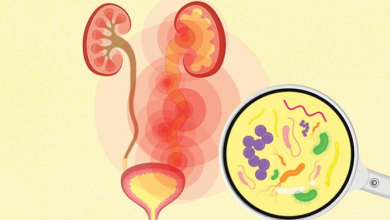Medical Malpractice: 4 Elements to Understand

Medical errors, from misdiagnoses to procedural mistakes, are more common than many of us would like to believe. While healthcare professionals strive for excellence, the reality is that the margin for error exists, posing a threat to patient safety.
What’s more surprising is that many medical errors go unreported. The Institute of Medicine estimates that a mere 10% of these errors are formally reported. Fear, legal worries, and doubts about making a real change cause this underreporting, keeping us in the dark about the real extent of the issue.
When filing a medical malpractice claim, we don’t only look at the elements; timing is also everything. The statute of limitations sets the maximum time frame for filing a lawsuit after medical malpractice occurs. The medical malpractice statute of limitations by state varies, typically one to six years after the incident.
Want to know what exactly these elements entail and how they decide if a healthcare professional is liable for their actions? We will break down these four elements and what you can do if you find yourself facing the same situation.
Duty of Care
When you seek medical treatment, you place your trust in the hands of healthcare professionals. The duty of care refers to the legal obligation healthcare providers have—giving a certain standard of care to their patients.
This means that they’re responsible for acting in a manner that any reasonable and competent healthcare professional would under similar circumstances. This is often established by expert testimony from other healthcare professionals in the same specialty.
As a patient, you have the right to expect that your healthcare provider will act in your best interests and give you the appropriate level of care. This duty of care extends to all aspects of your treatment including:
- Diagnosis
- Medication
- Surgery
- Post-Operative Care.
Recognizing medical malpractice requires understanding the duty of care and being able to identify when it has been breached. This breach may occur through negligence, errors in judgment, or failure to follow established protocols. Not all mistakes or unfavorable outcomes constitute medical malpractice but if the breach of duty of care causes harm to the patient that could have been prevented, then it may be grounds for a medical malpractice claim.
Breach of Standard of Care
When healthcare providers fail to meet the duty of care, it can lead to a breach of the standard of care in medical treatment. This breach occurs when a healthcare provider deviates from the accepted medical practices and fails to provide the same level of care that a reasonably competent healthcare professional would have provided in a similar situation. In other words, it means that the healthcare provider didn’t meet the standard of care expected from them.
To prove a breach of standard of care in a medical malpractice case, you need to establish that the healthcare provider’s actions or lack of actions fell below what a reasonable healthcare provider would have done in the same circumstances. This requires expert testimony from other healthcare providers who can provide their professional opinion on the matter.
A breach of standard of care doesn’t automatically mean that medical malpractice has occurred. It’s just one of the elements that need to be proven in a medical malpractice case. The breach of standard of care must have also caused harm or injury to the patient to have a valid claim. If you believe that you have been a victim of a breach of standard of care, consult with a medical malpractice attorney who can evaluate your case and guide you through the legal process.
Causation
To establish causation in a medical malpractice case, it’s necessary to demonstrate a direct link between the healthcare provider’s breach of standard of care and the resulting harm or injury to the patient. This means you must show that the healthcare provider’s negligence directly caused the harm or injury you suffered.
Proving causation can be a complex task, as it requires presenting evidence that connects the healthcare provider’s actions or omissions to the specific harm or injury you experienced. To establish causation, you’ll need to provide expert testimony from medical professionals who can explain how the healthcare provider’s breach of the standard of care directly led to your harm or injury. They’ll need to demonstrate that it’s more likely than not that the healthcare provider’s actions or omissions directly caused the harm or injury, based on their knowledge and expertise in the field.
You’ll need to show that there were no other intervening factors that could have caused the harm or injury. This means ruling out any other possible causes, such as pre-existing conditions or unrelated medical complications.
Read also The Ultimate Guide to Choosing Your CFD Broker for 2023
Damages
Damages refer to the harm or injuries suffered by the patient as a result of medical malpractice. In a medical malpractice case, damages can be both economic and non-economic.
- Economic damages are the quantifiable losses that can be easily calculated, such as medical expenses, lost wages, and future medical costs.
- Non-economic damages are more subjective and include pain and suffering, emotional distress, loss of enjoyment of life, and loss of consortium.
The purpose of awarding damages in a medical malpractice case is to compensate the injured patient for their losses and to provide them with some measure of justice. The amount of damages awarded is determined by factors, including the severity of the injuries, the impact on the patient’s life, and the long-term consequences of the malpractice.
Each state has its laws and regulations regarding damages in medical malpractice cases. Some states have placed limits or caps on the amount of damages that can be awarded, while others have no such restrictions.
Conclusion
The four elements of medical malpractice help those who suspect they may be victims of medical negligence. These elements serve as a framework for knowing whether you have a valid medical malpractice case. Understanding these elements can help everyone protect their rights and seek justice when they’ve been a victim of medical malpractice.







